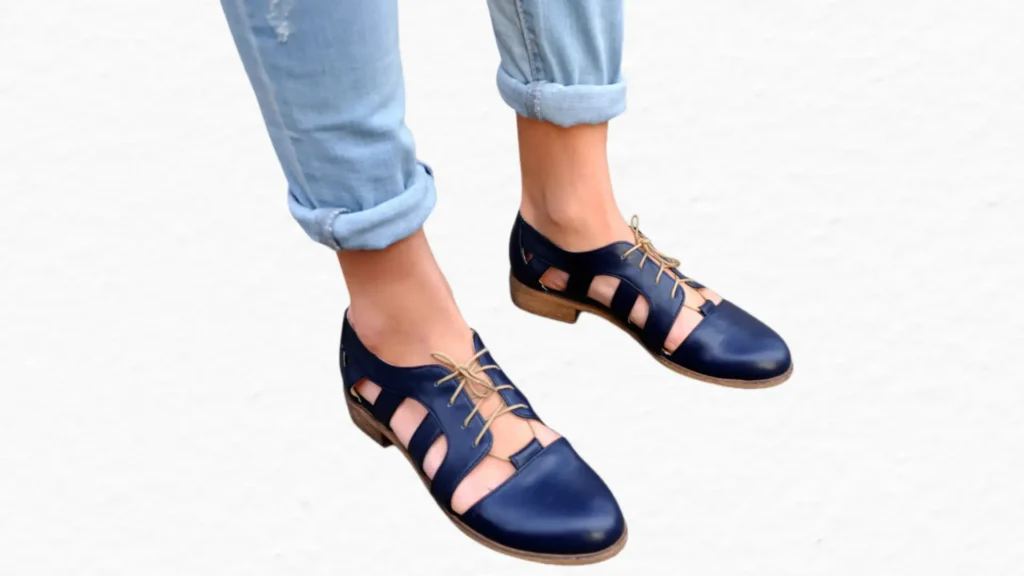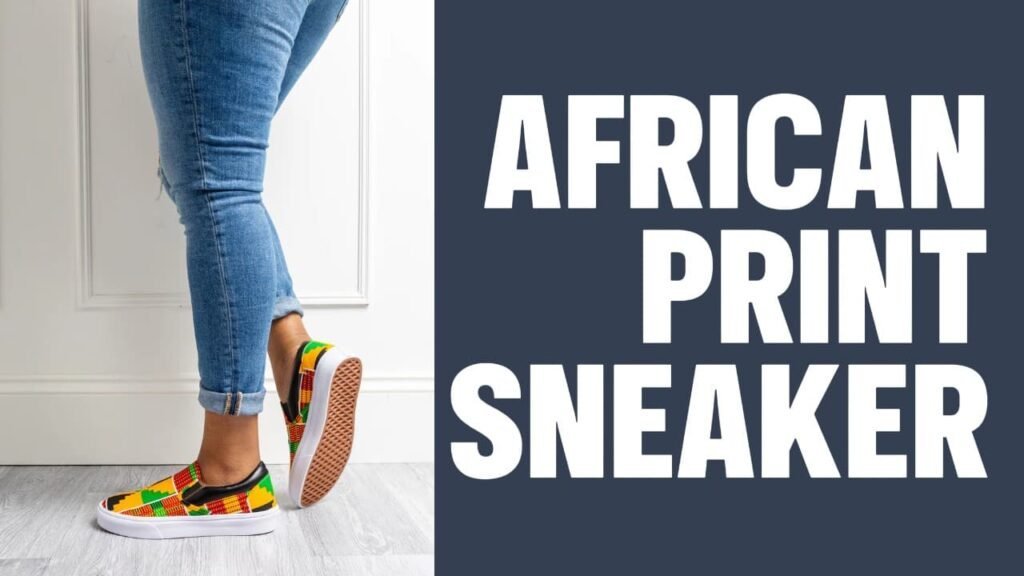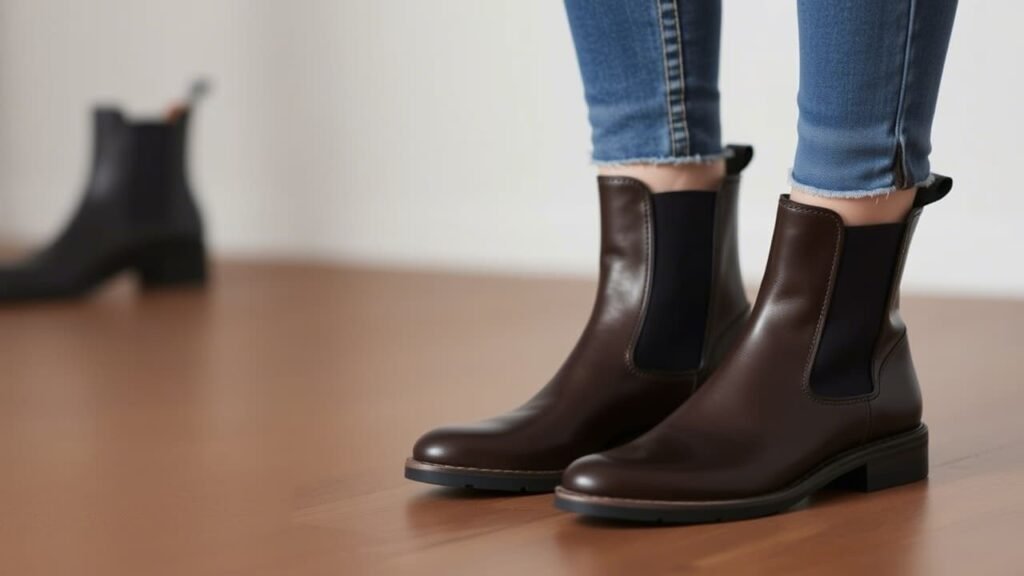Shoes are a marvel of design and engineering. They are crafted to protect, support, and enhance our foot’s natural abilities. Every component of a shoe serves a specific purpose. In this article, we’ll dissect the anatomy of a shoe, exploring its key parts and their functions.
Upper
The upper is the most visible part of the shoe. This encompasses everything above the sole that wraps around and protects the foot. It plays a multifaceted role in ensuring comfort, breathability, durability, and style. Leather, suede, canvas, mesh, or synthetic fabrics used for crafting the upper are critical factors that influence how well the shoe performs under different conditions.
Toe Box
Toe box is the frontmost section of the upper. It is designed to encase the toes and forefoot. Its primary function is to provide ample space for natural toe movement while safeguarding the foot from external impacts. A poorly designed toe box can lead to discomfort.
Vamp
Vamp refers to the central portion of the upper. It spans from the toe box to the laces. This component directly covers the top of the foot. Vamp must be flexible enough to accommodate foot movement but sturdy enough to prevent excessive pressure.
Quarter
The quarter is located at the rear and sides of the upper. It wraps around the heel and extends toward the midfoot. It plays a vital role in stabilizing the foot during movement by preventing lateral slipping. Many athletic shoes incorporate breathable mesh in the quarter to enhance airflow and reduce overheating.
Collar
Collar is the padded area surrounding the opening of the shoe where the foot enters. Its primary purpose is to enhance comfort by cushioning the ankle and preventing chafing. High-top sneakers and hiking boots feature extended collars to provide additional ankle support.
Tongue
Tongue is a strip of material positioned beneath the laces. It protects foot from direct lace pressure. In athletic shoes, the tongue is typically padded to offer extra cushioning and distribute force evenly across the foot.
Sole
The sole forms the foundation of the shoe. It is responsible for interacting with the ground and supporting the foot. It consists of multiple layers, each engineered to serve a specific purpose.
Outsole
As the outermost layer of the sole, the outsole is the first point of contact with the ground. Its primary functions are to provide traction, grip, and durability. Outsoles are commonly made from rubber due to its excellent resistance to abrasion and slip-resistant properties. Depending on the shoe’s intended use, the outsole may feature unique tread patterns.
Midsole
Situated between the outsole and the insole, the midsole serves as the shoe’s shock absorption system. It cushions the foot against impact forces generated during walking, running, and jumping. EVA foam, polyurethane, and proprietary blends are widely used for their lightweight and energy-returning properties.
Insole
Also known as the footbed, the insole is the innermost layer of the sole that directly contacts the foot. Its primary role is to enhance comfort by providing additional padding and arch support. Some insoles are removable. Removable insoles allow users to replace them with custom orthotics tailored to their specific needs.
Heel
The heel is the rear section of the shoe that supports the back of the foot. It plays a pivotal role in stability and balance.
Heel Counter
Embedded within the quarter, the heel counter is a rigid piece of material. They are made from plastic or thermoplastic polyurethane (TPU). Its main job is to maintain the shoe’s shape and prevent the heel from collapsing over time. A strong heel counter also helps stabilize the foot. This feature is especially important in athletic footwear.
Heel Cup
The heel cup is the curved indentation at the back of the shoe that cradles the heel. A deep and well-contoured heel cup ensures proper alignment and minimizes slippage during movements. It also reduces strain on the Achilles tendon by keeping the heel securely in place
Laces and Closure System
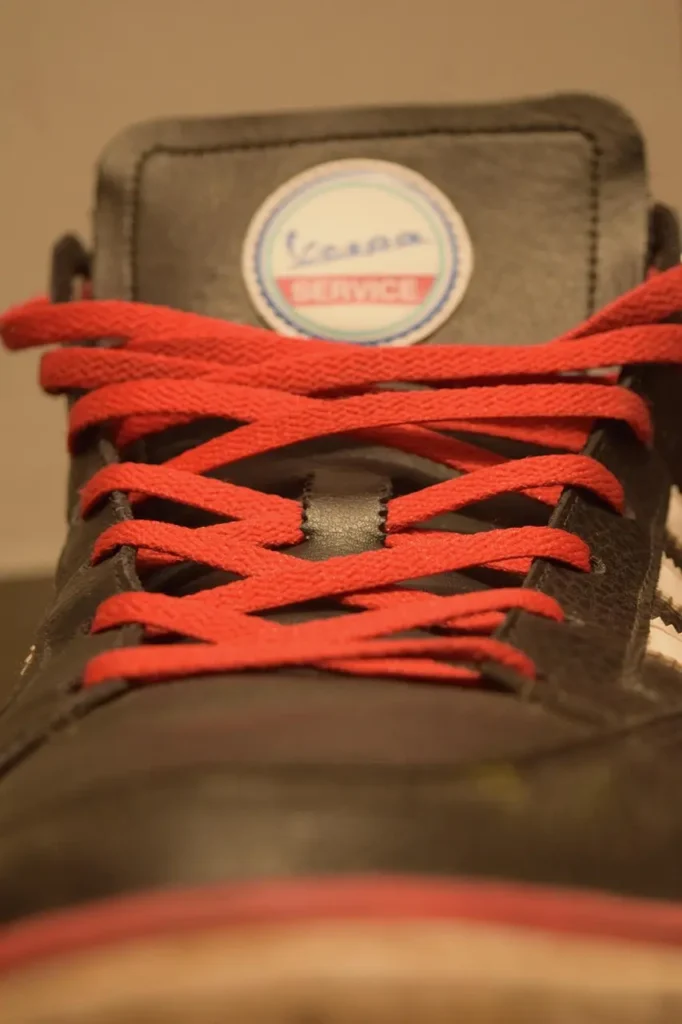
Laces are one of the most common mechanisms for securing shoes. They offer an adjustable fit that adapts to individual preferences.
Eyelets
Eyelets are small holes through which the laces pass. They are useful to tighten or loosen the shoe. Reinforced eyelets, made from metal, increase the longevity of the closure system and prevent fraying.
Aglets
Aglets are the protective tips at the ends of shoelaces. They not only make threading easier but also prevent the laces from unraveling. Without aglets, laces would quickly fray and become difficult to manage.
Shank
The shank is a supportive component located between the insole and the outsole. Its primary function is to provide structural rigidity and prevent the shoe from flexing excessively in the middle.
Shank is particularly essential because it helps distribute weight evenly across the foot. It reduces strain on arch. This feature is invaluable when carrying heavy loads and traversing uneven terrain. Steel shanks are used in industrial footwear to protect against punctures and provide additional support.
A well-designed shank enhances overall stability and reduces fatigue during prolonged wear. However, too much rigidity make the shoe uncomfortable.
Welt
The welt is a strip of material. It is crafted from leather, or rubber. It is used to connect the upper to the sole of the shoe. This component plays a vital role in enhancing the durability and longevity of footwear.
The welt creates a robust bond between the upper and the sole. This construction method makes it easier to repair. This helps to extend its lifespan.
In some designs, the welt forms a channel that can be filled with waterproof materials. This feature is beneficial for wet environments.
Toe Cap
The toe cap is an additional layer of material placed over the toe box to reinforce this high-stress area. Depending on the shoe’s purpose, the toe cap may vary in design and material.
Work boots and safety shoes incorporate steel, composite, and hard plastic toe caps to shield the toes from heavy objects. These protective caps meet industry standards to ensure worker safety in hazardous environments.
In athletic and casual shoes, toe caps are typically made from reinforced leather or synthetic overlays. They protect against scuffs, scrapes, and general wear caused by frequent use.
Beyond functionality, toe caps enhance the visual appeal of a shoe. Contrasting colors, textures, and stitching patterns are used to create distinctive designs that align with fashion trends.
Padding and Linings
Padding and linings are internal components designed to maximize comfort. These features are important for all-day wear.
Collar and tongue are often lined with foam, memory foam, or neoprene. These padded areas reduce pressure points, prevent chafing, and provide a snug fit around the ankle and instep. In performance footwear, enhanced padding minimizes discomfort during prolonged use.
Breathable linings, made from mesh, microfiber, or moisture-wicking fabrics, help regulate temperature and keep feet cool and dry. This is valuable in athletic shoes, hiking boots, and summer footwear.
Advanced linings combat bacteria and fungi that cause unpleasant odors.
Decorative Elements
While decorative elements do not contribute directly to functionality, they play a significant role in defining the shoe’s style and brand identity. These details transform a utilitarian item into a fashion statement.
Stitching Patterns
Intricate stitching adds texture and visual interest. These designs reflect craftsmanship and attention to detail.
Logos and Branding
Logos, emblems, and signature patterns serve as identifiers of the brand’s heritage and philosophy. For example, Nike’s swoosh or Adidas’ three stripes instantly convey recognition and trust.
Embellishments
Embellishments like perforations, metallic accents, and embroidery allow designers to experiment with aesthetics. These elements cater to diverse tastes.
Why Understanding Shoe Anatomy Matters
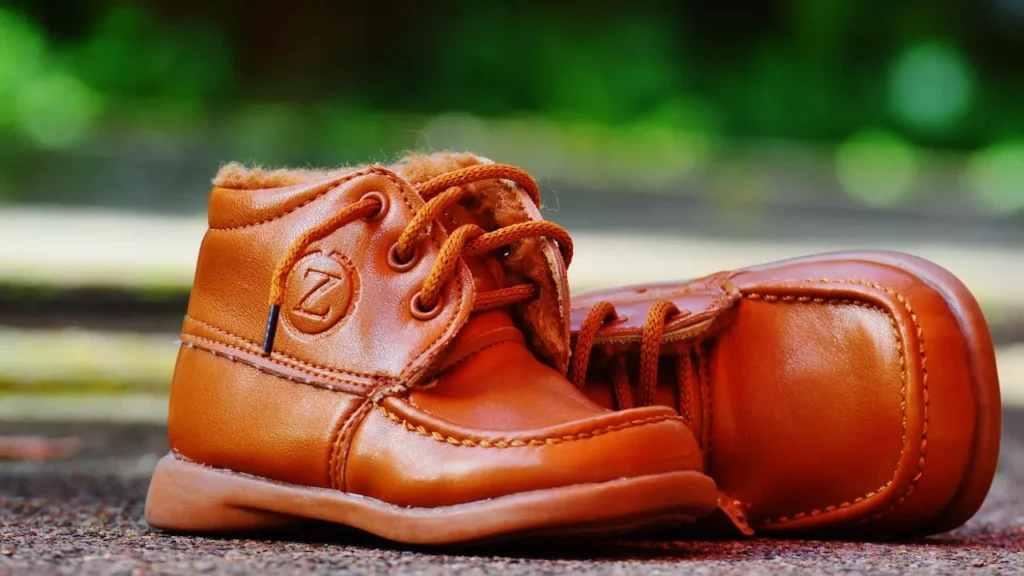
Knowledge of shoe anatomy empowers you to make informed decisions when purchasing footwear. This ensures that your choices align with the needs, preferences, and lifestyle.
Performance Optimization: Athletes benefit from understanding how shock-absorbing midsoles, grippy outsoles, and breathable linings contribute to performance. For instance, runners might prioritize lightweight shoes with responsive cushioning, while hikers require sturdy soles and waterproof uppers.
Professional Needs: Professionals seek shoes that combine style and durability. Leather uppers, durable welts, and polished finishes are hallmarks of quality dress shoes that exude sophistication.
Foot Health: Individuals with foot conditions, such as plantar fasciitis, flat feet, or bunions, can identify shoes with supportive features like arch support, cushioned insoles, and wide toe boxes. Customizable options, such as removable insoles for orthotics, further enhance accessibility.
Maintenance and Longevity: Recognizing signs of wear enables timely repairs. Resoling a Goodyear-welted shoe or replacing damaged eyelets breathe new life into a beloved pair.
Every part of a shoe works in harmony to balance comfort, protection, and performance. Understanding these components deepens your appreciation for footwear and helps you choose the right pair for your needs.


